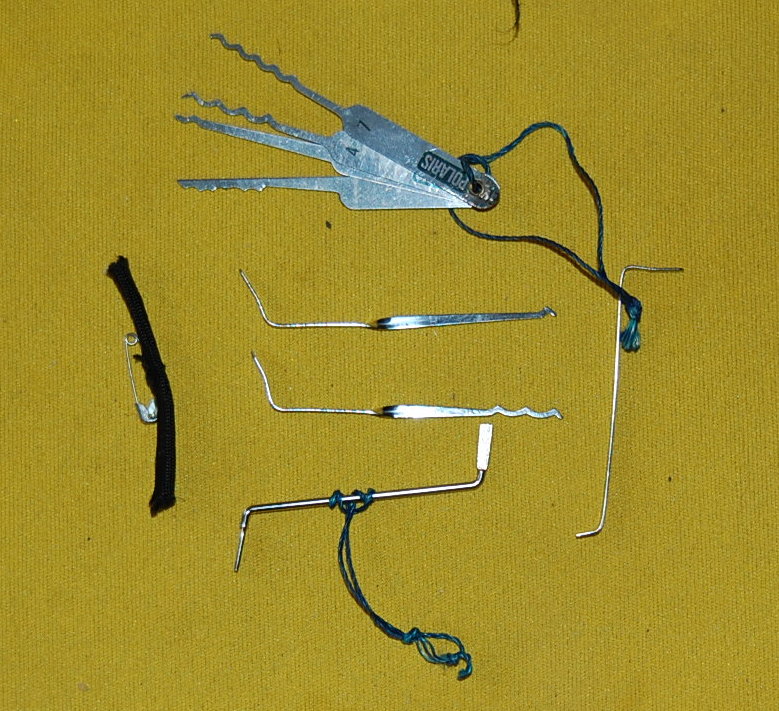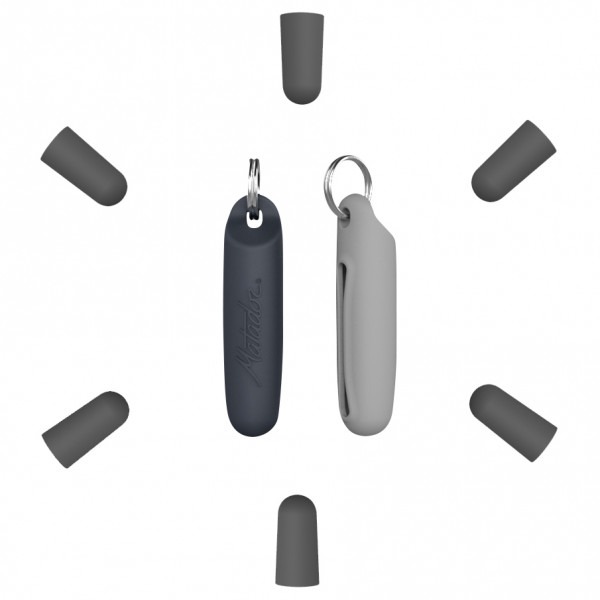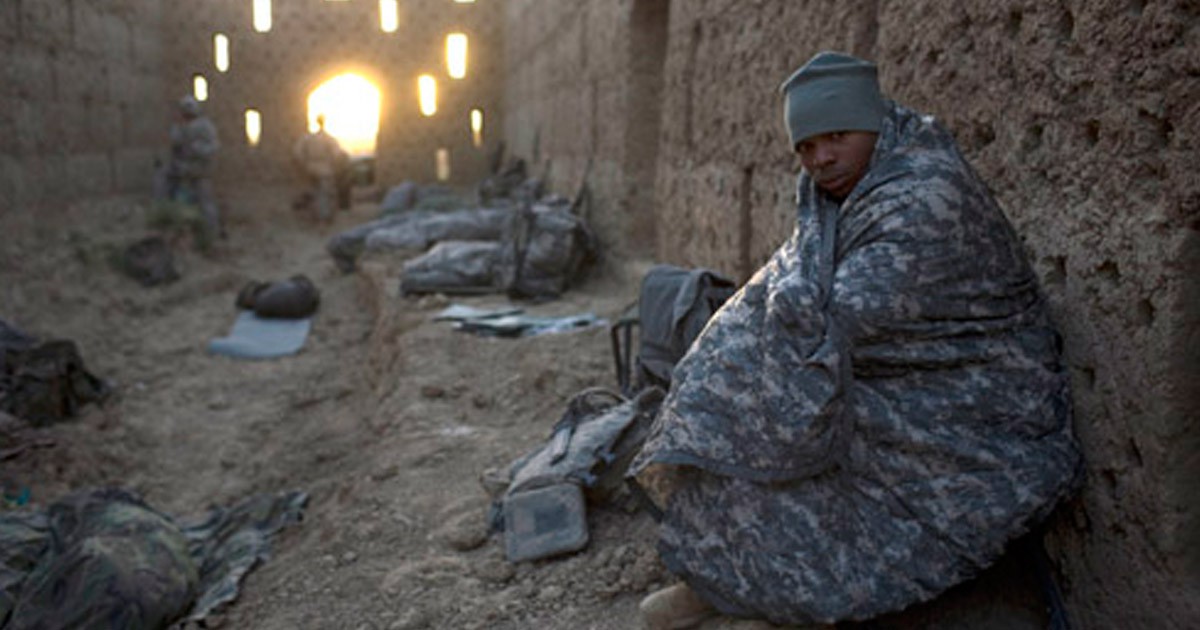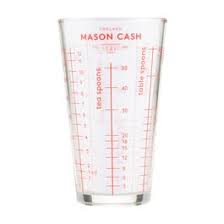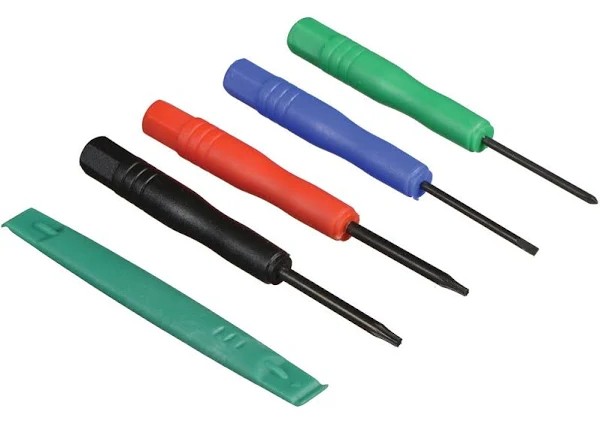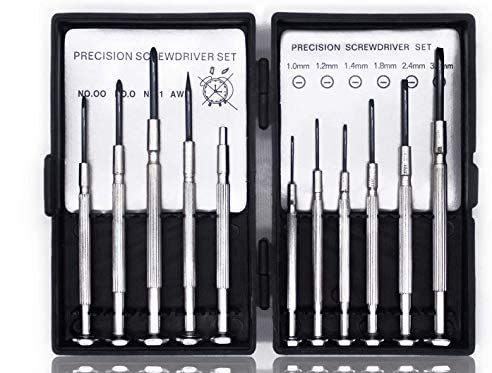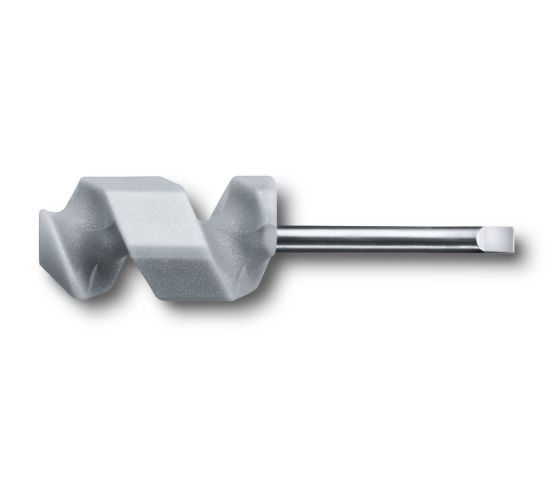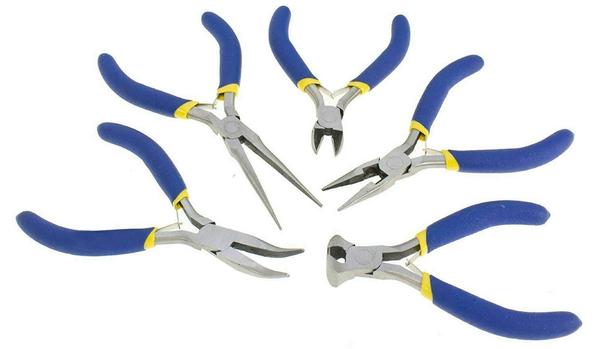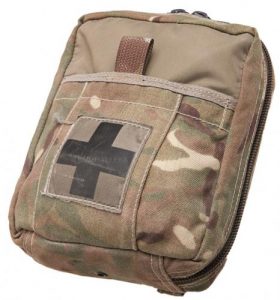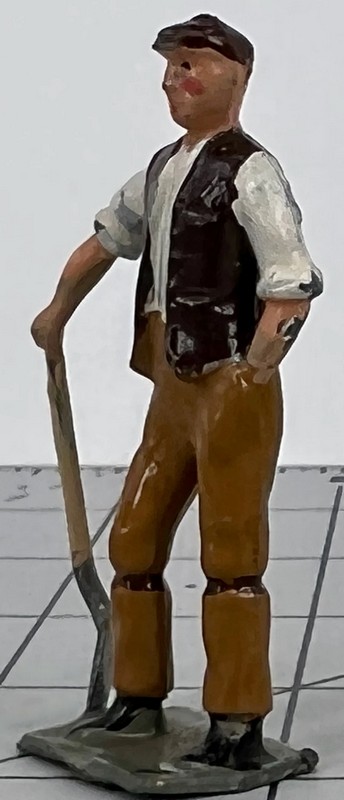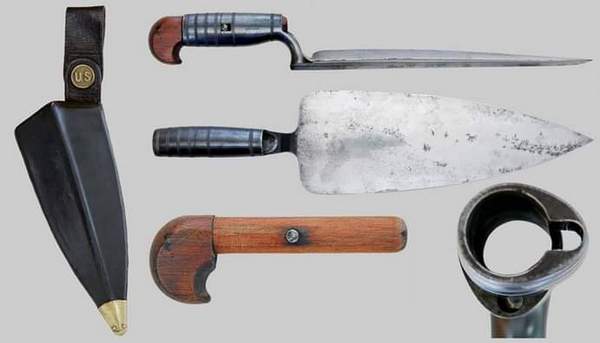One of these is that I found a copy of my original article on hosteling that was mentioned in a previous post.
Below is an OCR scan of the article, with minor proof corrections. I will reproduce it as it was originally written. Some of how I traveled in the years after this was written differed in actual practice.
When packing for some camping and hostelling in Germany, I was annoyed to discover that my capricious rucksack was nearly full, but I was taking virtually nothing. How could this be when I'd planned to travel “Light but Right”? I felt better when I discovered that the weight was only 15 kilos; and much better when I saw what some of my fellow travellers were carrying.
I recall one Canadian girl who carried a full-size pack with a sleeping bag on top, a daypack on her front and another in her hand: and she was just hosteling. Another girl admitted that she once carried 21 kilos in clothes alone.
Many male travelers are just as bad. For these people the following statement is made: You can travel around the world by hostel and only need a 30 litre daysac.
The following intends to explain how.
Bedding
Most hostels in northern Europe provide blankets or quilts, so the only bedding that you need is a sleeping bag liner or sheet bag. I have three tips concerning such items:
• If you are a restless sleeper who often gets tangled up in a bag then cut the bag liner from toe to mid thigh and resew so the bag has separate legs.
• Sewing a different textured cloth around the opening allows you to find the way in even in the dark. It also provides a means of identification. Ladies might consider a piece of lace for this purpose.
• Keep the liner handy near the top of the pack or in a pocket. No one likes the roommate that wakes them up by turning on the hall or bathroom light then pottering around for half an hour getting ready for bed.
In some countries the bedding is not provided or not safe. You'll be sleeping indoors so forget the 5-season Everest-expedition bags.
Usually a 1-2 season bag or a blanket will be sufficient. Blankets can be folded flat in a pack to act as a pad for the back. If the bag or blanket takes up too much room, it can be strapped to the top of the pack in a waterproof bag. This proves useful as a pillow or seat.
Another useful item is a set of pockets that can be tied to a bed frame.
These hold my alarm clock and ear plugs and keep my glasses from getting under foot.
Clothing
Clothing takes up most of the bulk because most people take lots of cotton.
Cotton is fine for hot, dry climates but takes ages to dry and is very cold when wet. It is to be avoided when possible.
All the shirts I now carry are silk. Silk is comfortable in warm weather and warm in cold. It also dries very quickly. Surprisingly, cotton shirts and silk are of a similar price at the moment.
Often I've been drenched in downpours yet remained comfortable and dried within the hour.
It’s also a wonderful feeling (and very practical) to walk in off a hike, straight into the showers and soap down the shirt before removing it.
Strictly speaking you need only three shirts: wash, wear and spare. On most trips I take two long-sleeved and two short-sleeved silk shirts. The latter resemble tee-shirts in that they only open down to the chest. The collars have been removed so they can be worn under a long-sleeved shirt for extra insulation.
It seems inevitable that you will end up with some cotton items. Some people like tee-shirts for sleeping-in and they make good souvenirs.
Trick is to have them as a reserve, not as a main garment.
Polyester tee-shirts can be had that are just as comfortable but much quicker to dry.
For underwear. I carry three pairs of nylon or polyamide swimming shorts. In addition to drying fast, they have another advantage. If I want to change “into” shorts all I have to do is remove my trousers.
For colder climates, merkalon thermal underwear takes up little room and is easily washed and dried.
I've met two different travelers who've carried fourteen pairs of socks! You don’t need more than four pairs.
Ideally these should be wool/synthetic but often I make do with cotton.
The trick is to rinse in very hot water and give them a good wringing out.
The best way to wash socks is to put them on your hands and wash your hands.
Sewing a loop to the top of each sock gives greater security when hanging them up or tying them to something. This allows them to be tied to the outside of your pack to act as pouches.
A few bandannas are useful to carry since they have numerous uses.
Denim jeans are fine for hot, dry weather but once wet they take ages to dry and if you're wearing them you'll be miserable.
Lighter cotton or polycotton trousers will be better, and maybe better still will be the “cotton-feel” synthetics.
It's worth remembering that trousers take a lot of punishment so a very lightweight pair may be a false economy.
If walking off-road, a pair of gaiters or puttees (spare bandannas?) will keep your trousers clean. Better still, wear breeches or shorts.
Carrying something clean to sit on (and using it) will save laundry duty. Another tip is to always place your bag on its base or front when putting it down. This saves soiling your shirt back.
That covers the basic everyday clothing.
To summarize, select garments that are versatile and easily washed and dried, preferably by the cheap method of dunking in a sink and hanging on a line.
A warm garment such as a jumper or fleece is needed for cold days, rest halts or walking around in the evenings.
A lightweight windproof jacket of something fast drying such as nylon will be useful for milder conditions and can be worn over the fleece.
An important garment is some form of waterproof. Wear it only when needed but keep it close to hand. A good place is under the pack flap above the snow lock. Remember these garments also serve as windproofs.
A good way to warm-up is a hat. Hats also keep the sun from your eyes and the rain off your glasses. Choose something that will survive being put-in a pocket, such as a baseball cap and a woolly hat.
Footwear
When carrying a rucksack I always wear boots. They've saved my ankles on both hillsides and cobbled streets. Depending on expected conditions, these will be either canvas hiking boots, leather walking boots or DMs.
The canvas boots are kept clean by my nail brush; the others require a simple cleaning kit. This is simply a brush, tin of polish and an old sock to buff with and keep them in.
You might like to carry another pair of shoes to give your feet a rest in the evenings. I favour espandriles.
I've never carried an iron since most of the creases fall out of T-shirts if hung-up, and silk only retains a few wrinkles that doesn’t look too shabby. Large creases can be removed from silk by smoothing with a damp flannel.
The Wash Kit
The choice of items is personal but I'll list my choices as a guide:
• A screw topped bottle of shampoo: 125ml but seldom fully filled. A 50ml tube proved adequate for most trips.
• A flannel: half of one would do.
• A hand towel: pertex is preferred.
• A bar of soap: used as an antiseptic, laundry agent and for shaving: hence no shaving brush nor foam needed nor carried.
• Razor.
• Deodorant.
• A “fit any hole” sink plug. I actually seldom used this.
• A small nail brush: used dry, this removes mud from clothing and canvas boots. Wetted with a little soap it removes any stubborn marks from clothing.
• A plastic bag of toilet paper: most hostels will provide paper but many of the sights you visit may not, so this in fact rides with your daytime items.
The Emergency Bag
Most of this is taken up by the medical kit which consists of:
• Various plasters in a waterproof film container.
• Painkillers and anti-diarrhoea tablets protected from crushing by cigar tins.
• Sun cream and insect repellent.
• TCP: liquid is better since it doesn’t mark clothes, lasts a long time if diluted to instructions and can be gargled for sore throats.
The sewing kit fits in a waterproof tube and contains a couple of shirt buttons, five safety pins (for zips), three needles including a sallmaker’s that will sew leather and canvas, and a piece of matchstick or straw wound with several metres of “invisible” thread.
Also in this pack is a lighter, small torch, string and a roll of dental floss that has various uses including heavy duty sewing.
The contents of the sewing and medical kit combine to treat blisters.
Hostels that have kitchens usually provide pots but you may need something to provide you with a hot lunch or drink when rambling. All one needs is something to boil up water quickly for tea, soup, noodles or a freeze-dried pack. An alcohol jelly stove or mini-Trangia is ideal.
Also needed for travel off the beaten track is a survival bag, compass and maps.
Female Travelers
Most of this article has a male bias, for good reason. When it comes to female clothing I can’t speak first hand, but have sought some advice.
According to fashion magazines one can go on holiday with just a swimsuit/body, large baggy tee shirt, white shirt, sarong and white chinos.
This is obviously not the whole story but has the right idea by having lots of versatile and mixable separates, preferably in silks or synthetics as already detailed.
A friend maintains she needs a long-dress for hot weather and that viscose is quite comfortable but should be folded rather than rolled.
Another says she would pack a dress suitable for going to concerts (and presumably suitable shoes since not everyone can pull off the look with walking boots).
I'm also told that tights are better than socks since they dry quicker. I'd imagine that stockings are better still since if you hole two legs you still have a pair to wear.
For shoes that don’t look right with socks, there are things called shoe liners.
As for males, swimwear can be used as underwear.
Packing
Knowing what to carry is only half the story. There is also the art of packing.
Most of the smaller packs on the market are designed for climbing and somewhat short on pockets. Pockets can be added on but in practice this may not be needed. A small pack is easier to remove and there is less room for things to go astray.
The front or top pocket of a small pack will hold a guide book, notebook and some sweets and chocolate. There may be room for a waterproof and some socks to change into when travelling overnight.
At the very bottom of the main compartment are bags containing the crushable clothes: underwear and socks.
Above is a padded bag or small box containing the items you don’t want creased such as shirts, trousers and dresses. Padded bags can be made from bubble wrap.
In my kit the shirts and trousers are wrapped around a stuff-sack of “smalls” and then rolled up in a short length of covered foam sheet.
The fleece or jumper is placed in its own unpadded bag so it can be accessed easily when needed.
Denser items are placed on top to compress the softer below. These include spare shoes, polish kit, mini-stove, lunch and a bag of miscellaneous items (things you don’t need now but will need in the future: home front door keys, guide book for the next country, presents, money, phone and travel cards for the country you're returning to, etc).
On top of these items is a bag containing the wash kit, towel, alarm clock, earplugs and sleeping bag liner (wrapped separately to protect it from damp wash items).
Everything needed for bed can therefore be grabbed in one go.
Nearer the top is the emergency bag and a small bag containing the hat, gloves, bandannas and scarf. If the top pocket of the pack is full, this bag can be pinned or sewn to the inside of the sack to prevent it falling to the bottom.
Also near the top of the bag is my All-Weather blanket: used as a ground sheet for picnics and as a waterproof cape.
An external pocket is useful for a water-bottle. If making your own pocket it must be large enough to take a bottle of locally brought water. Bottles are by their nature waterproof so a pocket can be something as simple as nylon mesh.
I also carry a GO Pure Cup that will chlorinate 500 litres of suspect water. The cup is useful for gargling and diluting TCP.
A thermos, if carried, will ride in the main compartment, insulated by the clothing.
Another use for mesh is to make a bag for drying damp items in. Pin this to the edge of the pack flap where it will ride high and is less likely to be soiled if you put your bag down. When it starts raining, you can push it under the pack flap as you reach for your rainproof.
A final note on packing.
The sack is lined with a waterproof bag and as many items as possible wrapped individually and distinctively, which protects from water and makes things easier to locate. Spare plastic bags are also carried.
There should be enough room in your pack for purchases made while travelling.
There are a few other items that I would take, but these are carried on my person.
They include my Swiss Army knife and passport. The latter should never be left in your rucksack!
In summary, the basic strategy is to carry a few low-bulk items that can easily washed, and more importantly are quick to dry. In many countries there are minimum charges at laundries so using them can prove very expensive.
Carrying a smaller pack also makes it easier to use public transport and means your pack will always fit in luggage lockers and racks. It also makes it easier on you should you need to sightsee with your pack on your back, as sometimes occurs.
When you reach your accommodation, the pack can be unpacked of any unneeded items and used as your daypack.
The Ideal Bag?
The ideal pack would be in two parts, the smaller fitting onto the larger.
The larger bag holds the things you carry when moving between accommodation, the smaller the stuff needed when walking around in the day.
The larger bag contains the sleeping bag, bed kit, shoe polish, miscellaneous bag, spare shoes, clothing, underwear, socks and laundry pouch. The capacity can be increased, and the straps covered to prevent damage from luggage carousels.
The smaller bag takes a hat, gloves and scarf in one pocket, a waterproof under the pack flap, a waterbottle in a side pocket, stove, lunch, fleece, emergency kit, and AW blanket in the main compartment and guidebook, novel,notebook, sweets and toilet paper in another.
Acknowledgement. Many thanks to Aileen Fyfe, a first rate traveler who provided invaluable advice and comments. I hope my comments will in turn lighten your load.
Philip West.
August 1996


